
Find Help
More Items From Ergsy search
-

What is the mortality rate of Nipah Virus infection?
Relevance: 100%
-

What are the symptoms of Nipah Virus infection?
Relevance: 69%
-

What is Nipah Virus?
Relevance: 64%
-

Is there a cure for Nipah Virus?
Relevance: 64%
-
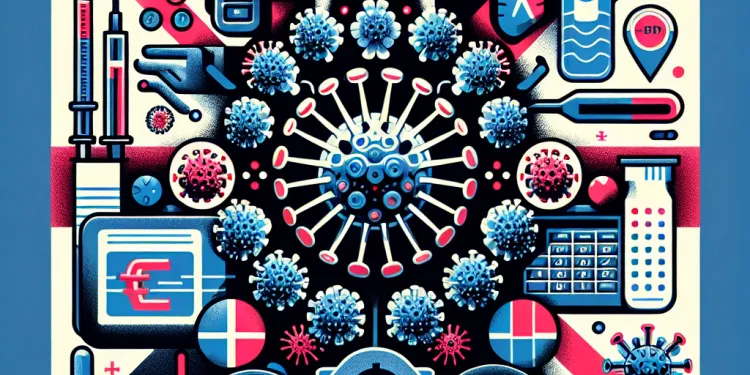
Can Nipah Virus cause neurological complications?
Relevance: 61%
-

What should someone do if they suspect Nipah Virus infection?
Relevance: 60%
-

What is the mortality rate of Marburg virus disease?
Relevance: 60%
-
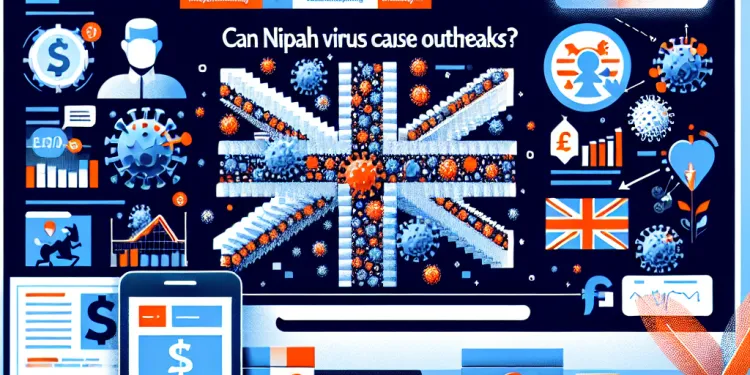
Can Nipah Virus cause outbreaks?
Relevance: 59%
-

How is Nipah Virus transmitted?
Relevance: 55%
-

Why are Nipah Virus outbreaks considered a public health concern?
Relevance: 55%
-

Where was Nipah Virus first identified?
Relevance: 53%
-

What preventive measures can reduce the risk of Nipah Virus infection?
Relevance: 53%
-

How is Nipah Virus diagnosed?
Relevance: 51%
-
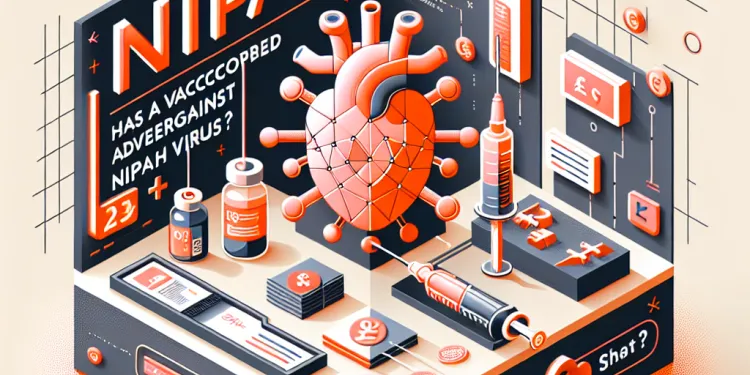
Has a vaccine been developed against Nipah Virus?
Relevance: 50%
-
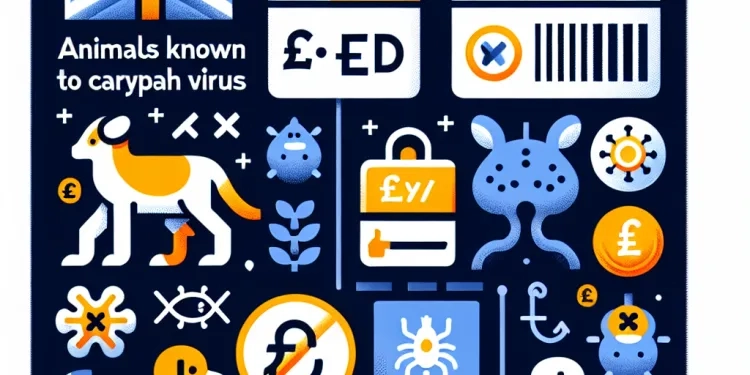
Which animals are known to carry Nipah Virus?
Relevance: 48%
-

Can Nipah Virus be transmitted from person to person?
Relevance: 48%
-
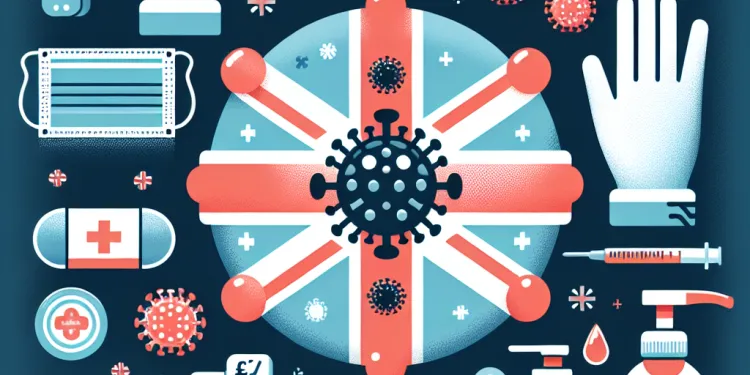
How is Nipah Virus controlled during outbreaks?
Relevance: 47%
-

What global organizations are involved in Nipah Virus research?
Relevance: 46%
-
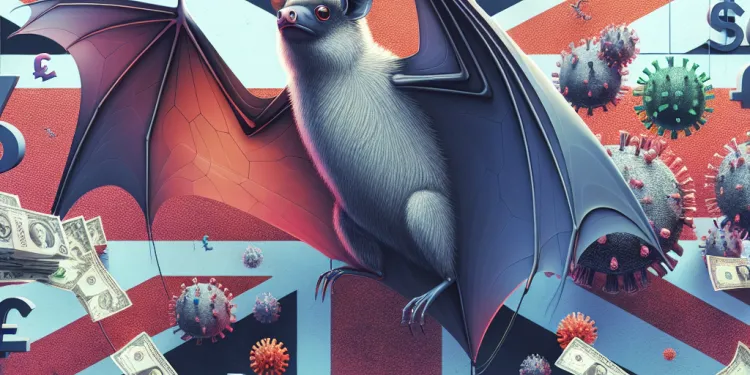
What role do fruit bats play in Nipah Virus transmission?
Relevance: 46%
-

What is the mortality rate of untreated bubonic plague?
Relevance: 45%
-
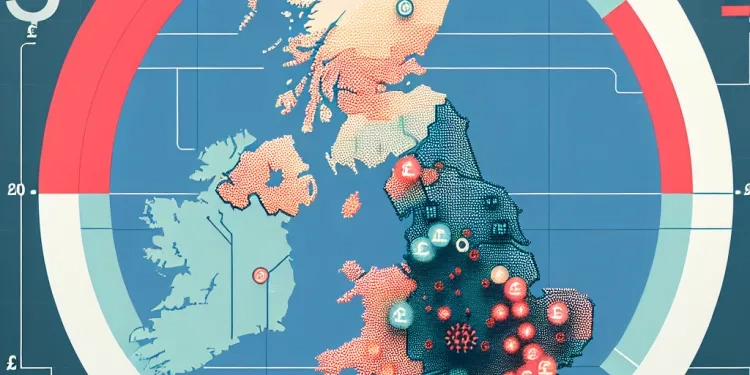
What regions are most at risk for Nipah Virus outbreaks?
Relevance: 43%
-

What is the Marburg Virus?
Relevance: 34%
-
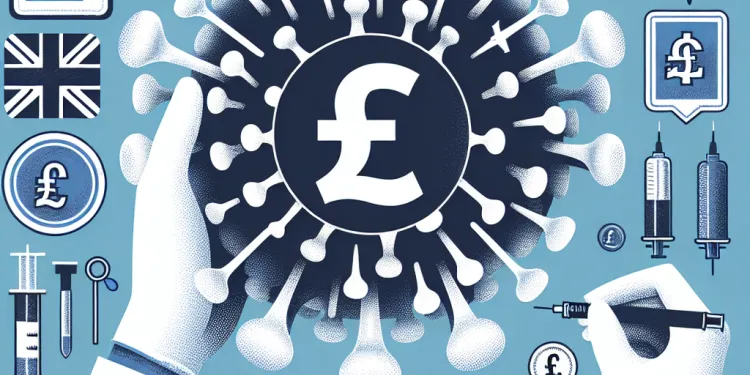
What is Chikungunya virus infection?
Relevance: 34%
-

Has Marburg virus caused any major outbreaks?
Relevance: 32%
-

Can Chikungunya virus infection be treated?
Relevance: 32%
-

How is Chikungunya virus infection diagnosed?
Relevance: 32%
-

Is the Marburg virus related to the Ebola virus?
Relevance: 32%
-

Can men in the UK transmit Zika virus if infected?
Relevance: 31%
-

Is there a vaccine for Marburg virus?
Relevance: 30%
-

How do health authorities confirm a Marburg virus outbreak?
Relevance: 29%
-

What are the symptoms of Marburg virus disease?
Relevance: 28%
-

What research is being done on the Marburg virus?
Relevance: 26%
-

How is Marburg virus disease diagnosed?
Relevance: 26%
-

How can healthcare workers protect themselves from Marburg virus infection?
Relevance: 26%
-

Can Marburg virus disease recur after recovery?
Relevance: 26%
-

What is the typical progression of Marburg virus disease?
Relevance: 26%
-

Can Marburg virus disease be prevented?
Relevance: 25%
-

What is the Ebola virus?
Relevance: 25%
-
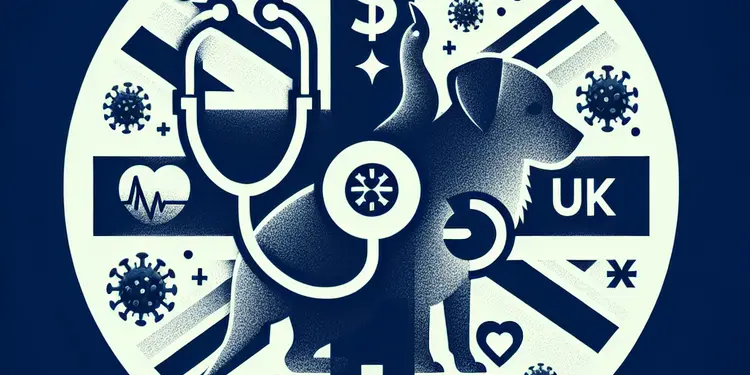
Can animals be infected with H3N2?
Relevance: 24%
-

What is Nipah Virus?
Relevance: 23%
Understanding the Mortality Rate of Nipah Virus Infection
The Nipah virus (NiV) is a zoonotic virus transmitted from animals to humans and can also be transmitted directly between humans. First identified in Malaysia in 1998, the virus has since caused several outbreaks, primarily in South and Southeast Asia. Understanding the mortality rate associated with this virus is crucial for public health preparedness and response.
Mortality Rate in Different Outbreaks
The mortality rate of the Nipah virus varies considerably depending on the outbreak. On average, the case fatality rate (CFR) has been reported to range from 40% to 75%, which is notably high compared to many other infectious diseases. For instance, the initial outbreak in Malaysia had a lower CFR of around 40%, partly due to rapid identification and response measures that included the culling of infected pigs, the primary animal reservoir during this outbreak.
In contrast, outbreaks in Bangladesh and India have exhibited higher mortality rates, sometimes exceeding 75%. These higher rates are attributed to the absence of a specific treatment or vaccine, delayed detection, and lack of awareness. The virus affects the central nervous system, leading to acute respiratory distress and encephalitis, both of which contribute to the high mortality observed during these outbreaks.
Factors Influencing Mortality Rate
Several factors influence the variability in the mortality rate of Nipah virus infection. The strain of the virus is one critical factor, as certain strains may be more virulent than others. Additionally, the healthcare infrastructure in place during an outbreak can significantly impact survival rates. Regions with better access to healthcare and rapid response systems tend to have lower mortality rates.
Another significant factor is the presence of underlying health conditions in patients, which can exacerbate the virus's impact and lead to higher fatality rates. The timing of intervention also plays a role; earlier detection and supportive care can improve patient outcomes.
Current Challenges and Future Prospects
As of now, there is no licensed vaccine available for the Nipah virus, although research is ongoing. The high mortality rate and the lack of specific antiviral treatment pose considerable challenges to public health officials. Efforts are focused on early detection, improving awareness, and implementing stringent quarantine measures to control outbreaks. International collaboration and investment in vaccine development are crucial in mitigating the risks associated with future outbreaks.
For the UK and other regions where the virus is not endemic, maintaining vigilance through travel advisories and understanding the nature of the virus is essential. Preparation and global cooperation remain key components in addressing the threat posed by the Nipah virus and reducing its mortality rate in future outbreaks.
Understanding Death Rates from Nipah Virus
The Nipah virus is a germ that can move from animals to people and also spread between people. It was first found in Malaysia in 1998. Since then, it has caused sickness in parts of Asia. Knowing how deadly this virus is helps doctors and health workers get ready and help people better.
Death Rates in Different Outbreaks
The number of people who die from Nipah virus changes during different outbreaks. Usually, 40% to 75% of infected people do not survive, which is very high compared to other sicknesses. When the virus first appeared in Malaysia, about 40% of infected people died. This was because people quickly found out about it and took action, like getting rid of sick pigs.
In other places like Bangladesh and India, more people died from the virus, with over 75% death rates sometimes. This is because there is no special medicine or shot to stop the virus, people do not know much about it, and doctors find out too late. The virus can harm the brain and lungs, making it very dangerous.
Why Death Rates Change
Many things can change how deadly the Nipah virus is. Some types of the virus are more dangerous than others. Places with good hospitals and quick help can save more people. If a person has other health problems, the virus can be more deadly. Finding the virus early and caring for sick people quickly helps save lives.
Challenges Now and Future Plans
Right now, there is no vaccine to stop Nipah virus, but scientists are working on it. The high death rates and no specific medicine are big problems for health workers. They focus on finding the virus early, teaching people about it, and using strict rules to stop it from spreading. Working together around the world and investing in making vaccines will help manage the risks in the future.
In places like the UK where the virus is not common, staying alert and knowing about the virus is important. Being ready and cooperating globally are key ways to handle the threat of Nipah virus and lower the number of deaths in future outbreaks.
Frequently Asked Questions
What is the mortality rate of Nipah Virus infection?
The mortality rate for Nipah virus infection can vary between 40% and 75%, depending on the outbreak and local healthcare capabilities.
How dangerous is the Nipah Virus?
The Nipah Virus is considered highly dangerous due to its high mortality rate, which ranges from 40% to 75%, making it more lethal than many other viral infections.
Has the mortality rate of Nipah Virus changed over the years?
The mortality rate of Nipah Virus tends to vary by outbreak, but it generally remains high, averaging between 40% and 75%, depending on clinical management and public health response.
Why is the mortality rate of Nipah Virus variable?
The mortality rate of Nipah Virus varies due to differences in healthcare access, the timeliness of diagnosis, supportive care, and the virulence of the specific virus strain involved in the outbreak.
What factors contribute to the high mortality rate of Nipah Virus?
The high mortality rate is attributed to severe neurological and respiratory symptoms caused by the virus, lack of specific treatment or vaccine, and potential delays in diagnosis and supportive care.
Is there a treatment that can reduce the mortality rate of Nipah Virus?
Currently, there is no specific antiviral treatment for Nipah Virus, so management focuses on supportive care to reduce mortality rates, but early detection and intervention can improve outcomes.
How does the Nipah Virus mortality rate compare to other viruses?
The Nipah Virus has a significantly higher mortality rate compared to many other viruses such as influenza, making it a critical concern for public health.
Can the mortality rate of Nipah Virus be decreased with better healthcare?
Improved healthcare infrastructure, early detection, and intensive supportive care can potentially decrease the mortality rate of Nipah Virus infections.
What was the mortality rate in the first outbreak of Nipah Virus?
In the first known outbreak of Nipah Virus in Malaysia in 1998-1999, the mortality rate was approximately 40%.
Is the Nipah Virus mortality rate consistent worldwide?
No, the mortality rate can differ between regions depending on the outbreak specifics, healthcare infrastructure, and public health response capabilities.
Do all Nipah Virus outbreaks have the same mortality rate?
No, different outbreaks of Nipah Virus have shown varying mortality rates, often influenced by regional healthcare access and virus strain, typically ranging from 40% to 75%.
Can vaccination reduce the mortality rate of Nipah Virus?
As of now, there is no approved vaccine for Nipah Virus, so reducing the mortality rate relies on early diagnosis and supportive care.
Has any outbreak of Nipah Virus had a mortality rate above 75%?
Some outbreaks, particularly in regions with limited healthcare capacity, have reported mortality rates that exceed 75%.
What is the average mortality rate for Nipah Virus across all outbreaks?
The average mortality rate for Nipah Virus across reported outbreaks is generally between 40% and 75%.
What measures are important to reduce the mortality rate of Nipah Virus?
Key measures include early detection, isolation of infected individuals, supportive care, and effective public health responses to contain outbreaks.
Are there any long-term aftereffects for survivors of Nipah Virus?
Yes, survivors of Nipah Virus infection may suffer from long-term neurological complications such as persistent convulsions or personality changes.
How do public health interventions impact the mortality rate of Nipah Virus?
Effective public health interventions, such as swift outbreak response, contact tracing, and public awareness, can help reduce the spread and mortality rate of Nipah Virus.
Is infection with Nipah Virus always fatal?
No, not all cases are fatal, but due to the high virulence of the virus, a significant percentage of infections result in death without effective treatment.
Why is early diagnosis important for reducing the mortality rate of Nipah Virus?
Early diagnosis allows for the timely initiation of supportive care, which can improve patient outcomes and reduce mortality rates.
What are the main symptoms contributing to the high mortality rate of Nipah Virus?
Severe symptoms such as acute respiratory distress and encephalitis are the main contributors to the high mortality rate in Nipah Virus infections.
How many people die from Nipah Virus?
This means we are asking: Out of all the people who get Nipah Virus, how many die?
If you want help reading, you can ask someone you trust to read with you. You can also use a computer or phone to read the text out loud for you. This can make the text easier to understand.
The Nipah virus is very dangerous. It can make many people very sick. About 4 to 7 out of every 10 people who get the virus might die, depending on how bad the outbreak is and how good the doctors and hospitals are.
If you want help with reading, you can use tools like text-to-speech apps. These apps can read the text out loud for you. You can also ask someone to read it with you and explain any tricky words.
How dangerous is the Nipah Virus?
The Nipah Virus can make people very sick.
It can spread from animals to people. Sometimes, people can spread it to each other.
If you feel sick, go to the doctor. They can help you.
Washing your hands is important. It can keep you safe from germs.
The Nipah Virus is very dangerous because it can make many people sick. If 100 people get the Nipah Virus, between 40 and 75 of them might die. This makes the virus more deadly than many other germs.
Has the number of deaths from the Nipah Virus changed over time?
The Nipah Virus can make people very sick. It can sometimes cause death.
We want to know if the number of people dying from this virus has changed over the years.
If you find this hard to read, you can use tools like reading apps or ask someone for help to understand better.
The number of people who die from Nipah Virus can be different each time it spreads. Most of the time, a lot of people do not get better. Between 40 out of 100 and 75 out of 100 people who get Nipah Virus might not survive. How well doctors and nurses help people can make a difference. How quickly health workers stop it from spreading also helps.
Why do different numbers of people die from Nipah Virus?
Sometimes, the Nipah Virus can be very dangerous and more people might die. Other times, not as many people die. This can change because:
- The virus can be different in different places.
- How people are treated can make a big difference.
- If doctors find the virus quickly, they can help more people.
To help understand, you can:
- Use pictures or videos about the Nipah Virus.
- Ask someone to explain it with simple words.
The number of people who die from Nipah Virus changes a lot. It can be different because of things like how easy it is to get to a doctor, how quickly they find out someone is sick, how much help sick people get, and how strong the virus is.
Here are some things that can help:
- Go to a doctor quickly if you feel sick.
- Make sure doctors know about Nipah Virus.
- Get good care when you are sick.
Why do many people die from the Nipah Virus?
The Nipah Virus is very dangerous.
Here are some reasons why:
- The virus can make you very sick.
- People can catch it from animals or other sick people.
- There is no medicine to stop it.
- It can spread quickly in certain areas.
To help understand better, you can:
- Look at pictures or videos about the virus.
- Ask someone you trust to explain it to you.
The virus can make people very sick. It can hurt the brain and lungs. This can make people die. There is no special medicine or shot to stop it. Sometimes, doctors find it too late to help.
Can doctors help save lives from Nipah Virus?
Right now, there is no special medicine to treat Nipah Virus. Doctors help people feel better with supportive care. Finding the virus early and getting help quickly can make people feel better.
How Deadly is the Nipah Virus Compared to Other Viruses?
The Nipah Virus is very dangerous. It can make many people sick and some may die.
Other viruses can also be deadly, like the flu or coronavirus. But the Nipah Virus can be more deadly than some of these viruses.
To understand this better, you can use charts or drawings. They help show how many people get sick from each virus.
Talking to a doctor or using health websites can also help you learn more.
The Nipah Virus is very dangerous. More people die from it compared to some other viruses like the flu. This makes it a big worry for keeping people healthy.
Can fewer people die from the Nipah Virus if we have better healthcare?
Better hospitals and doctors, finding the virus early, and giving lots of care can help save lives from the Nipah Virus.
How many people died when Nipah Virus first started?
This is about how many people got very sick and died from Nipah Virus when it started.
Here are some tips to help you read:
- Use a finger or a ruler to guide your reading.
- Read out loud to better understand the words.
- Ask someone to read with you or explain words you don't know.
When the Nipah Virus happened in Malaysia in 1998-1999, 4 out of 10 people who got sick died.
Is the Nipah Virus death rate the same everywhere?
No, the number of people who die can be different in each area. This depends on things like how bad the outbreak is, how good the hospitals are, and how well the health services work.
- Try reading out loud. It can help to hear the words.
- Use a finger or pointer to follow along with the words.
- Break the text into small chunks to understand it easier.
Do all Nipah Virus outbreaks kill the same number of people?
No, not every outbreak of Nipah Virus is the same. Some time more people get very sick than other times. How many people get very sick can change. It depends on things like the kind of virus and how good the hospitals are. Usually, 4 to 7 out of 10 people who get it might die. Talking to a doctor is important if someone feels sick. Use pictures, videos, or apps to help understand more.
Can a Vaccine Help Save Lives from the Nipah Virus?
A vaccine is a medicine that helps protect you from getting sick. The Nipah Virus can make people very ill and can even cause death.
If we have a vaccine, it might help fewer people die from the Nipah Virus. This means it could save lives.
To understand better, we can:
- Talk to a doctor or nurse.
- Use simple videos or pictures to learn more.
- Ask questions if we are stuck.
Right now, there is no vaccine for the Nipah Virus. To help people get better, doctors need to find out if someone has the virus quickly and give them care to support their recovery.
Has the Nipah Virus ever killed more than 75% of sick people?
In some places, lots of people get sick and there aren't enough doctors and nurses to help everyone. In these places, more than 75 out of every 100 people may die when there is a big outbreak of a disease.
How many people usually die from Nipah Virus in outbreaks?
Nipah Virus is a sickness. We want to know how many people die from it when there is an outbreak.
Here’s how you can find the answer:
- You can use a calculator to help with numbers.
- Ask a friend or family member to help explain.
- Look for simple charts or pictures showing numbers.
The Nipah Virus is a sickness. If 100 people get the virus, about 40 to 75 people might die from it. That means it is a very serious illness.
How can we help people not to die from the Nipah Virus?
Important steps are: finding sickness early, keeping sick people away from others, helping them feel better, and having good health plans to stop the spread of germs.
Do people feel different for a long time after having Nipah Virus?
Yes, some people who get better from the Nipah Virus might still have problems. These can be things like having fits that happen again and again or acting in a different way than they did before.
For help, it can be good to talk to a doctor or nurse. They can explain what is happening and how to help. Using pictures, simple charts, or videos can also help understand these problems better.
How do health actions help with Nipah Virus death rates?
Health actions, like medicine and safety rules, can help fewer people die from the Nipah Virus.
Using pictures and short videos can make it easier to learn about this. Also, asking an adult can help you understand better.
We can help stop the Nipah Virus by doing a few important things. These include acting fast when there's an outbreak, finding and staying in touch with people who might be sick, and letting everyone know about it. This can help keep people safe and healthy.
A picture guide or a simple video can help us understand better. Also, talking to a doctor or a health worker can be very helpful.
Does Nipah Virus always cause death?
No, Nipah Virus does not always cause death. Some people who get the virus can get very sick, but not everyone dies from it.
Here are some ways to help understand better:
- Use simple words when talking or reading about it.
- Look at pictures or videos to learn more.
- Ask someone to explain it to you if you find it hard.
No, not everyone dies from this virus. But it is a very strong virus, so many people can get very sick and die if they don't get good medicine.
If you find this hard to read, using a ruler can help you follow the lines better. Audiobooks can also be helpful; you can listen while you read along with the text.
Why is it important to find out if someone has Nipah Virus early?
It is very important to know if someone has Nipah Virus as soon as possible. This can help doctors give the best care and stop the virus from spreading.
Finding out early means people can get help faster. This can save lives and keep more people safe.
Tools like simple tests and clear health talks can help everyone understand what to do.
Finding health problems early helps doctors start care quickly. This can help people feel better and live longer.
What signs of Nipah Virus make people very sick or die?
The Nipah Virus can make people feel very sick. It can be very serious and sometimes it makes people die.
Here are some signs that someone might have Nipah Virus:
- High fever: This means the body is very hot.
- Bad headache: This means the head hurts a lot.
- Trouble breathing: This means it's hard to breathe in and out.
- Sleepiness or confusion: This means feeling very tired or mixed up.
These signs can make people very, very sick. If you see these signs, quickly tell a doctor.
Here are some tools and tips to help:
- Use a picture dictionary to understand words better.
- Ask someone you trust to help read and explain.
- Use text-to-speech apps to listen instead of reading.
When someone gets very sick with the Nipah Virus, they might have trouble breathing and their brain can get sick. These problems are why many people do not survive.
Useful Links
- Ergsy carfully checks the information in the videos we provide here.
- Videos shown by Youtube after a video has completed, have NOT been reviewed by ERGSY.
- To view, click the arrow in centre of video.
- Most of the videos you find here will have subtitles and/or closed captions available.
- You may need to turn these on, and choose your preferred language.
- Go to the video you'd like to watch.
- If closed captions (CC) are available, settings will be visible on the bottom right of the video player.
- To turn on Captions, click settings .
- To turn off Captions, click settings again.
More Items From Ergsy search
-

What is the mortality rate of Nipah Virus infection?
Relevance: 100%
-

What are the symptoms of Nipah Virus infection?
Relevance: 69%
-

What is Nipah Virus?
Relevance: 64%
-

Is there a cure for Nipah Virus?
Relevance: 64%
-

Can Nipah Virus cause neurological complications?
Relevance: 61%
-

What should someone do if they suspect Nipah Virus infection?
Relevance: 60%
-

What is the mortality rate of Marburg virus disease?
Relevance: 60%
-

Can Nipah Virus cause outbreaks?
Relevance: 59%
-

How is Nipah Virus transmitted?
Relevance: 55%
-

Why are Nipah Virus outbreaks considered a public health concern?
Relevance: 55%
-

Where was Nipah Virus first identified?
Relevance: 53%
-

What preventive measures can reduce the risk of Nipah Virus infection?
Relevance: 53%
-

How is Nipah Virus diagnosed?
Relevance: 51%
-

Has a vaccine been developed against Nipah Virus?
Relevance: 50%
-

Which animals are known to carry Nipah Virus?
Relevance: 48%
-

Can Nipah Virus be transmitted from person to person?
Relevance: 48%
-

How is Nipah Virus controlled during outbreaks?
Relevance: 47%
-

What global organizations are involved in Nipah Virus research?
Relevance: 46%
-

What role do fruit bats play in Nipah Virus transmission?
Relevance: 46%
-

What is the mortality rate of untreated bubonic plague?
Relevance: 45%
-

What regions are most at risk for Nipah Virus outbreaks?
Relevance: 43%
-

What is the Marburg Virus?
Relevance: 34%
-

What is Chikungunya virus infection?
Relevance: 34%
-

Has Marburg virus caused any major outbreaks?
Relevance: 32%
-

Can Chikungunya virus infection be treated?
Relevance: 32%
-

How is Chikungunya virus infection diagnosed?
Relevance: 32%
-

Is the Marburg virus related to the Ebola virus?
Relevance: 32%
-

Can men in the UK transmit Zika virus if infected?
Relevance: 31%
-

Is there a vaccine for Marburg virus?
Relevance: 30%
-

How do health authorities confirm a Marburg virus outbreak?
Relevance: 29%
-

What are the symptoms of Marburg virus disease?
Relevance: 28%
-

What research is being done on the Marburg virus?
Relevance: 26%
-

How is Marburg virus disease diagnosed?
Relevance: 26%
-

How can healthcare workers protect themselves from Marburg virus infection?
Relevance: 26%
-

Can Marburg virus disease recur after recovery?
Relevance: 26%
-

What is the typical progression of Marburg virus disease?
Relevance: 26%
-

Can Marburg virus disease be prevented?
Relevance: 25%
-

What is the Ebola virus?
Relevance: 25%
-

Can animals be infected with H3N2?
Relevance: 24%
-

What is Nipah Virus?
Relevance: 23%


